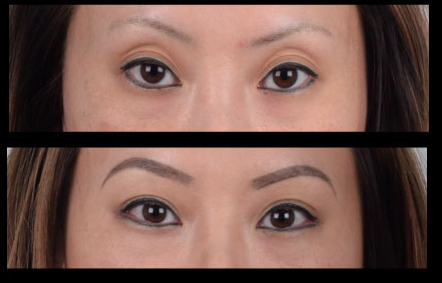Achieve Brighter, More Open Eyes with Double Eyelid Surgery

Table of Contents
- Understanding Double Eyelid Surgery
- Who Can Benefit from Double Eyelid Surgery?
- The Procedure Explained
- Questions to Ask Your Surgeon
- Choosing the Right Clinic and Surgeon
- Cost Considerations and Insurance
- Real-Life Stories and Testimonials
Key Takeaways
- Detailed explanation of the aesthetic and functional benefits of double eyelid surgery.
- Guidance on selecting the right surgeon and clinic to ensure a successful and satisfactory outcome.
- Recommendations for post-operative care and long-term maintenance.
Understanding Double Eyelid Surgery
When one refers to double eyelid surgery, medically known as blepharoplasty, they generally allude to a procedure designed to add or enhance the crease on the upper eyelid. This small yet significant modification has sky-rocketed in popularity due to its ability to yield a youthful and invigorated appearance. By adding this crease, the eyes may appear more extensive and expressive, highly coveted features in many cultures. The double eyelid surgery is not an off-the-shelf solution but a highly personalized technique adapted to each individual’s facial anatomy and specific requirements. Historically, double eyelid surgery originated in Asia and has since gained worldwide attention. The crease it creates can vary depending on the individual’s ethnic background, aesthetic preferences, and facial structure. Another aspect worth noting is the psychological effect of aligning one’s appearance with ideal beauty standards. These incremental changes often lead to heightened confidence and self-esteem, validating the surgery’s emotional benefit and physical reshaping of the eyes. As with any surgical procedure, double eyelid surgery carries risks and benefits, which must be weighed and discussed with a qualified professional. Consequently, it is crucial to understand the minute details surrounding the surgery, such as its potential impact on one’s eye health or the delicate nuances determining a natural look versus an overly done one.
Who Can Benefit from Double Eyelid Surgery?
While often associated with cosmetic desires, double eyelid surgery has a broader scope of potential beneficiaries. Aesthetic enhancement is a significant factor, with individuals desiring that coveted eyelid crease to enhance the eyes’ expressiveness. Yet, the procedure often transcends purely cosmetic realms, presenting a functional solution for specific medical conditions. Those experiencing ptosis, where the eyelid droops excessively, may find that double eyelid surgery can restore both form and function. Individuals with monolids, or single eyelids, may observe that their eyelid configuration sometimes impedes peripheral vision. Through the surgical creation of a double eyelid, these patients can achieve an expanded visual range, ease of makeup application, and reduced eyelid strain. Moreover, as every face exhibits asymmetries to some degree, double eyelid surgery can be instrumental in creating better facial balance, particularly for those with pronounced eyelid asymmetry.
The Procedure Explained
For those considering double eyelid surgery, it’s imperative to understand the intricacies involved. This procedure can be approached via multiple surgical techniques, the selection of which is tailored to the individual’s anatomy and the desired outcome. One standard method, the full-incision technique, allows for the precise shaping of the eyelid and removal of excess tissues, lending itself well to those requiring more dramatic modifications. Meanwhile, the partial-incision method is less invasive and is suitable for individuals with finer skin and minimal alterations. Non-surgical alternatives using specialized adhesives or temporary sutures give individuals a reversible glimpse into the possible enhancements of a permanent crease. With non-permanent methods, patients can explore the aesthetic changes without fully committing to surgery. Their temporary nature also allows users to experiment with the depth and shape of the desired crease. Once the surgery is completed, conscientious aftercare becomes crucial. Adhering to a disciplined recovery process, which might include the application of cold compresses, keeping the head elevated, and attending follow-up consultations, ensures that healing proceeds smoothly. During this time, avoiding strenuous activities and protecting the eyes from direct sunlight is essential. While discomfort and swelling are commonplace in the immediate post-operative period, these symptoms typically subside as healing progresses.
Questions to Ask Your Surgeon
Seeking double eyelid surgery warrants a thorough dialogue with a potential surgeon. Before settling on a decision, patients should engage in comprehensive consultations to garner a well-rounded understanding of the procedure. Pertinent questions may include the surgeon’s experience, particularly with patients of similar eyelid structure, and the techniques they specialize in. Knowing the range of possible outcomes can help patients align their expectations with achievable results. Other considerations encompass the full extent of the surgical risks, which, while generally low, can include infection, asymmetry, or an unsatisfactory crease formation. Discussing these potentialities alongside mitigation strategies establishes a realistic perspective on the surgery. Lastly, patients should inquire about the recovery timeline, potential complications, and the steps involved in post-operative care, all of which contribute to achieving an optimal outcome.
Choosing the Right Clinic and Surgeon
Deciding where and by whom to undergo double eyelid surgery is as significant as the surgery itself. Researching and selecting a certified, experienced medical professional should be a top priority for anyone considering this transformative procedure. Accreditation by relevant boards or societies, such as the American Board of Plastic Surgery, marks a surgeon’s dedication to excellence and safety standards. Potential patients should delve into the surgeon’s portfolio history, examining before and after photos of previous clients, particularly those with comparable facial features. These albums showcase the surgeon’s technical skill and index their aesthetic sensibility. Visiting the clinic and conversing with past patients or reading testimonials can offer additional insights into the experiences one might expect. A successful surgical journey often starts with the right choice of surgeon and facility.
Cost Considerations and Insurance
The financial aspect of double eyelid surgery encompasses several variables, such as the clinic’s location, the surgeon’s expertise, and the complexity of the specific case. While many consider this a cosmetic endeavor, thus excluded from insurance coverage, exceptions exist. Policies may differ when the surgery aims to correct vision obstruction due to structural eyelid issues. A clear understanding of the total cost spectrum, including initial consultation fees, post-operative care expenses, and potential revisions, is essential in planning for the surgery. Patients should thoroughly investigate their insurance policy, discern what aspects of the surgery may be covered, and explore various financing options should they be necessary.
Real-Life Stories and Testimonials
Hearing stories from individuals who have undertaken double eyelid surgery can be remarkably instructive for those contemplating the procedure. These accounts span a broad spectrum of impressions, with many reporting satisfaction with their new aesthetic and the accompanying boost in self-assurance. Dissimilarly, some may share regrets or unexpected emotional responses, underlining the importance of mental preparation and support. Such stories underscore the importance of a solid support system and realistic surgical expectations. It is also a poignant reminder that while physical changes can be impactful, the true essence of contentment often lies in self-acceptance and individuality.





